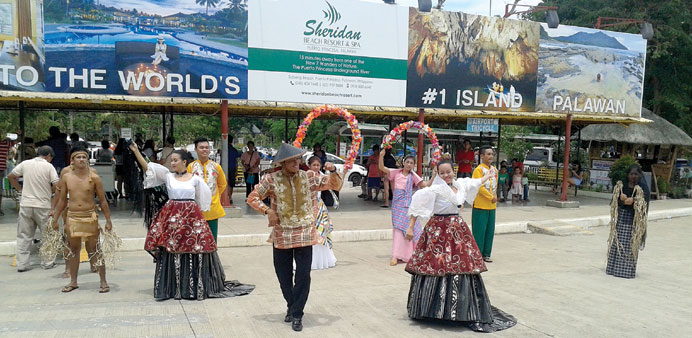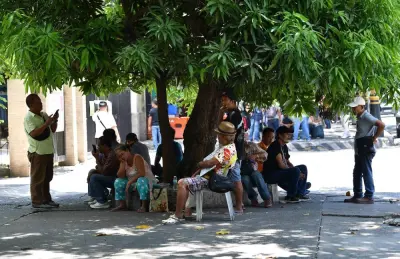By John Verghese
Philippines is looking to new markets to bolster its tourist inflow.
With the country being endowed with idyllic islands, sandy beaches, rainforests and some of the world’s greatest biodiversity, the travel and tourism sector is an important contributor to the economy.
Tourist traffic to Philippines from the Middle East reached 76,163 in 2014, growing by 10.52% over 2013. For the first quarter of 2015, arrivals from Qatar have already touched 1,038, growing by 32.4% over the previous period.
Tourists from Middle East, Russia, India as well as those from the neighbouring Southeast Asian nations are now being courted, as the government focuses on augmenting the present international arrivals and promotes the country of 7,107 islands as a family-friendly destination.
As part of this initiative, the Department of Tourism of the Philippines in partnership with Cebu Pacific, organised a familiarisation trip of Manila, Palawan and Cebu for media representatives from Qatar and the United Arab Emirates.
Cebu Pacific, a budget carrier, earlier this month launched two weekly non-stop flights between Manila and Doha, to add to the service it currently provides to other cities in the Middle East.
After touch down at the airport in Pasay City and on way to our hotel in Makati, ultra-modern skyscrapers, the ongoing construction frenzy and dense road traffic gave enough indicators of Philippines being one of Asia’s fastest growing economies today. Metro Rail Transit System as well as the Jeepneys on the road also showed that the nation has adopted modernity while still retaining grip over its traditional mode of transportation.
The next day’s Manila City tour on a mini-bus ride took us to the monument built in honour of national hero Jose Rizal in Rizal Park, as well as the Old Walled City of Intramuros built during the Spanish colonial period and containing Fort Santiago. The fort served as the headquarters of the military of the country’s colonisers such as the Spanish, Japanese and Americans before its destruction in 1945. The imposing San Agustin Church, the oldest structure in the country dating back to 1571 and Casa Manila, the reconstructed 19th century mansion replete with 16th and 19th century furnishings, helps one connect with the past. The upscale SM Mall of Asia shopping mall in Pasay and the City of Dreams luxury integrated resort and casino complex in Metro Manila are also symbols of the country’s high stature in Southeast Asia.
Food is a welcome break from the weariness of travel and irrespective of whether it is savoured in five-star hotels or traditional Filipino eateries, the local cuisine is delectable.
The abundance of fresh seafood, juicy tropical fruits and even the buko juice which is a blend of young coconut water, coconut meat and milk, ensures that even those who are less adventurous when it comes to culinary offerings, can come away with their system intact.
Travellers from the Middle East can also feel at home with varied fare like chicken adobo, grilled crab, prawns, scallop, squid, fish cordon bleu and mussels to go along with the ubiquitous rice, a staple food for the Filipinos. The delicious halo-halo dessert, which is a mixture of shaved ice and evaporated milk with various boiled sweet beans, jello and fruits, will also leave you desiring for more.
In addition, Manila, Cebu and Davao in south Philippines host a number of hotels that have halal-certified kitchens, offering Muslim-friendly cuisine.
In the western provincial island of Palawan, I realised that the government has given immense priority to protection of the environment in this mineral-rich area surrounded by dense rainforest. Puerto Princesa City, the island’s main commercial hub, has fines for littering, restrictions on smoking and a mining ban in several areas — one reason why it has been acclaimed as the greenest city in the country.
Tricycles are a popular mode of transport in Puerto Princesa but to curb congestion on the roads, a blue and white colour-coded schedule for plying of the tricycles is followed during the weekdays.
The tourism sector extends beyond the big hospitality industry players and entrepreneurs, with the local community heavily involved in maintaining the destination sites.
With the English language being widely spoken and understood, to go along with the Filipinos’ traditional hospitality and friendliness, international travellers will never feel a disconnect.
Located about 80kms north of the city centre is the Puerto Princesa Subterranean River National Park, a Unesco world heritage site and one of the New Seven Wonders of Nature. The national park is located at the Saint Paul Mountain Range on the western coast of the island. A motorised boat took us to the entrance of the subterranean river from the Sabang town. The park is rich in flora and fauna, with long-tailed macaques and monitor lizards being easily visible here.
A paddle boat took us for the cave tour, with tourists provided hard hats and life jackets for the ride through the cave, which is home to numerous bats and marine life.
A limestone karst mountain landscape with an 8.2km-long underground section of the Cabayugan River winds through the cave, with the river outflow heading directly into the West Philippine Sea (South China Sea).
Aided by a halogen light in the cave, our sharp-witted boatman, Matt, showed us the major formations of stalactites and stalagmites inside the cave. The 360-metre long Italian’s Chamber is one of the largest cave rooms in the world. Among the various formations seen inside the cave were a cathedral, castle, ship as well as a hotdog!
Crocodile breeding for commercial farming was showcased at our next stop at the Palawan Wildlife Rescue and Conservation Centre.
At this centre, crocodiles are segregated into different levels of maturity from egg to a few months old, to the older ones. Crocodile skin is used for the manufacture of bags, shoes as well as several other products.
Later, the Firefly Watching tour on a boat along the Iwahig River at night was indeed memorable, with the insects lighting up the trees as if it was an early Christmas.
The Cebu island, which is famous for its mangoes as well as resorts, festivals and multinational companies was our third stop. A visit to the Mactan and Hilutungan islands is a must for those keen on diving, snorkelling, fish feeding and swimming activities.
Cebu which is the capital of the Catholic faith, is also famous for its shell crafts that include necklaces, bracelets and earrings. Other prominent exports from here include fashion accessories, guitars and dried mangoes.
Philippines has a cool and mostly dry climate from November to February, while being warm from March to June. For those who want to catch up on rain, July to October is the ideal time.
With a plethora of spa and wellness resorts to go along with the country’s vibrant nightlife, a visit to the Philippines should rank high on the priority list for those with aching bodies and minds.

CULTURAL DANCE: A traditional dance performance in Puerto Princesa, Palawan.


